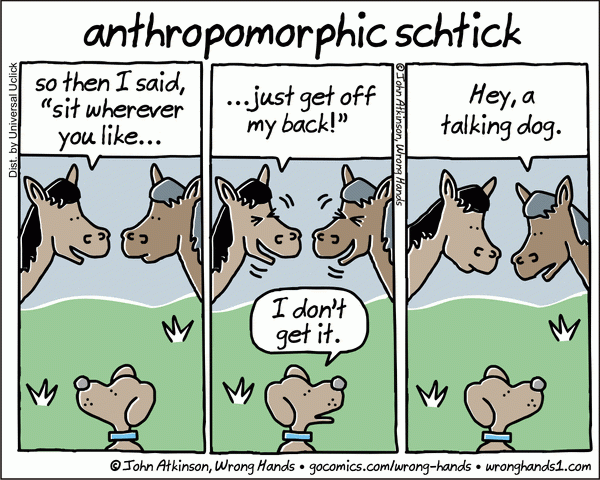The science of fundraising: Ask a behavioural scientist, part two
How should charities fundraise at certain times of the year? Should an environmental charity anthropomorphise the animals it protects? Behavioural scientist Dr. Kiki Koutmeridou answers all. SOFII would like to thank Kiki, DonorVoice and The Agitator for letting us reproduce the second article in this Q&A series.
- Written by
- Kiki Koutmeridou
- Added
- July 09, 2020

Behavioural science is a key study of human actions flowing from understanding behaviour, attitudes and motivations. It usually includes the fields of sociology, social and cultural anthropology, psychology, as well as behavioural aspects of biology, economics, geography, law, psychiatry, and political science. A behavioural scientist researches and attempts to explain human behaviour. This research can be done in many ways. Some studies require participants to fill out surveys about their behaviour, thoughts and reasoning behind actions. In other words it’s the science of how people will think and act, or are most likely to act, given any set of circumstances and it relies heavily on the study and understanding of neuroscience (the science of the human nervous system – ie, how the brain works).
As such, behavioural science could potentially be a fundamental tool for understanding why people give to charity and under which circumstances donations are more or less likely.
Dr Kiki Koutmeridou is a behavioural science expert who works closely with charities on the application of behavioural insights to charitable marketing communications. For the past couple of years, she has been answering fundraisers’ questions via the site of our friends The Agitator and we are extremely grateful to Kiki and The Agitator for letting us reproduce some of those questions and answers on SOFII. We will frequently publish new questions, so please stay tuned to learn when new content on this topic is available.
We also want you to get involved. Kiki has kindly agreed to answer any questions you may have that don’t appear here. If you have any, please ask them in the comments section below. Now over to Kiki!
- Joe Burnett, SOFII’s contributing editor
Q: My organisation is struggling to understand that dollar handles refer to what could happen rather than what will happen. They are very literal. Could you offer some guidance? Do you think there is an upper limit for dollar handles e.g. over $1000 for example do we get into major donor territory?
Kiki: The way out is to change the language from ‘$55 buys a school uniform and shoes’ to ‘$55 could buy a school uniform and shoes’. It’s a tiny change however it makes clear that the descriptions are not literal but an example. This change is important for donors too. They need to understand that it’s not a direct donation of that tangible benefit.
In addition to that, you could also stress to the staff that people need to be able to ‘see’ the impact their donation could have. Even if it’s in the imaginary plane (‘could have’), the description helps them visualise what they could offer, it increases their sense of perceived impact and makes it more likely for them to donate.
Major donors are the same and different. The same because they also need to see the impact of their donation. Different because they care mostly about their personal impact rather than the charity’s. This means, descriptions of what the amount they give could buy might be even more important for them. Another recommendation for major donors is to ask them to fund a very tangible, time-limited project e.g. build a school – this way they can monitor its progress and feel a great sense of impact when it’s completed.

Q: I work for an environmental NGO. We’re wondering if there’s been any research done as to the impact of anthropomorphising an animal as the subject of the appeal.
Kiki: That’s a very interesting question. I did some desk research and here’s what I found.
Animal welfare related findings
- Advertisers anthropomorphise animals to exploit them and convey the company’s messages i.e. animals want to serve humans. In this case, anthropomorphising is used for the exact opposite of your purpose. But its successful application – it does work and makes people feel they have a license to continue their consumption unaltered – hints that it could also be used for good.
- People respond more favourably, and are more influenced by, anthropomorphic portrayals of animals with a ‘high species similarity’ to humans than to non-anthropomorphic portrayals. However, participants responded more favourably to non-anthropomorphic representations of animals with a ‘low species similarity’. Thus, whilst demonstrating that anthropomorphism can be used to enhance the appeal of a product or brand, this study also shows that advertisers must work with its boundaries and limitations; anthropomorphism is most successful for animals or species that are perceived to be similar to ours.
- Films such as Chicken Run use anthropomorphism to reinstate animals as thinking, feeling beings, which could potentially subvert food norms and influence consumer perceptions of farm animals. Ironically, real chickens are not human enough for the film’s pro animal rights narrative to apply to them, whilst the chickens in the movie are not represented as animal enough to force consumers to reconsider the treatment of real chickens. So here we have a conundrum where anthropomorphism can help get a message across but people might not transfer these feelings in their every-day life decisions because in real life these animals have no human traits. The same could be true for nature conservation.
- There’s evidence that anthropomorphising animals increases prosocial behaviour. Research has demonstrated that people have an affinity for non-human entities that appear to have human qualities. Relative to the non-anthropomorphism description of dogs, participants in the anthropomorphism representation of dogs reported more willingness to adopt dogs from a shelter and more support for animal rights, animal welfare, and vegetarian and vegan attitudes (2012. Butterfield Et Al. Anthropomorphism promotes animal welfare).
Saving nature related findings
- Whether anthropomorphism of nature has any impact on the way people relate to and behave toward nature has rarely been examined. This study shows that in general anthropomorphism of nature fosters conservation behaviour. Moreover, when nature is anthropomorphised, people feel more connected to it; this sense of connectedness mediates the association between anthropomorphism of nature and conservation behaviour (2013. Saving Mr. Nature/ Anthropomorphism enhances connectedness to and protectiveness toward nature).
- Across three prosocial contexts, we found that individuals exposed to a message from an anthropomorphised social cause, compared with individuals exposed to a message relating to a non-anthropomorphised social cause, were more willing to comply with the message. This effect was mediated by feelings of anticipatory guilt experienced when they considered the likely consequences of not complying with the cause (2014, Ahn Kim, & Aggarwal. Helping fellow beings. Anthropomorphised social causes and the role of anticipatory guilt).
- Anthropomorphic messages, relative to non‐anthropomorphic ones, appear to motivate more conservation behaviour and elicit more favourable message responses only among recipients who have a strong need for acceptance or social connection. Among recipients whose such need is weak, anthropomorphic appeals seem to backfire (2014. Are anthropomorphic persuasive appeals effective? The role of the recipient’s motivations). Individual differences might explain why it works in some cases and not others.
- The present research aimed to disentangle the effects of emotional and non-emotional anthropomorphism, and differentiating amongst other emotional mechanisms of the anthropomorphism-compliance effect (namely, anticipated pride and anticipated regret). Experiment 1 compared the effectiveness of positive, negative, and emotionally-neutral anthropomorphised campaign posters for boosting campaign compliance intentions against non-anthropomorphised posters. We also measured potential mechanisms including anticipated guilt, regret, and pride. Results failed to support the anthropomorphism-compliance effect, and no changes in anticipated emotion according to anthropomorphism emerged. Experiments 2 and 3 represented further tests of the anthropomorphism-compliance effect. No differences in compliance intention or anticipated emotion according to anthropomorphism emerged. The results of these three experiments suggest that the anthropomorphism-compliance effect is fragile and perhaps subject to contextual and idiographic influences (2015, Revisiting the Effect of Anthropomorphising a Social Cause Campaign). We strongly recommend testing it before applying.
- Literature regarding the effect of anthropomorphism on sustainability behaviours is contradictory, which suggests that that anthropomorphism is contextually sensitive. The current study seeks to add clarity to this domain by assessing the role of anthropomorphism on consumer sustainability behaviour. Three experimental studies demonstrate that anthropomorphic cues (especially sad faces) activate a saviour effect, which occurs when an anthropomorphic messenger is viewed as a victim and evokes feelings of sympathy. In turn, sympathy leads to enhanced sustainability behaviour to save the victim from harm. However, when the desired sustainability behaviour costs the consumer, this effect is suppressed – in such cases, the anthropomorphic messenger shifts from threatened victim to marketing agent, which reduces sympathy toward the messenger. Thus, companies seeking to promote sustainable behaviours and preferences for sustainable products could use anthropomorphism but only when the behaviour does not result in additional payment to the organisation (2019. Victim or beggar? Anthropomorphic messengers and the saviour effect in consumer sustainability behaviour). It might be that anthropomorphism is more effective in increasing campaigning, volunteering, behaviour change than giving. We recommend testing it with all these asks with your specific audience to determine where it’s most effective.
In short, the use of anthropomorphism seems to be promising and it might increase animal welfare or conservation behaviour but you need to test it with different audiences, different asks and different anthropomorhised species to determine which combination is most effective.

Q: There have been a number of posts on matching gifts dealing with the type of match, but I’m wondering about the language of a match. Do donors respond better to an appeal that doubles their money, or one that doubles the amount of good that can be done?
Kiki: To my knowledge, there’s no study separating the effect of doubled money vs. doubled impact. As you say, most are interested in the effectiveness of the different types of match offers. In that context, some mention that your money will be doubled, some your impact and some both. To answer your question, one would have to create three versions of the same match offer:
1. Mention of doubled impact and doubled money
2. Mention of doubled impact only
3. Mention of doubled money
However, a bigger question is whether you should be using matching gift offers at all. There’s an increasing number of studies with evidence pointing to the contrary:
- Matching offers increase donations only in some geographical areas (Karlan & List, 2007).
- Matching offers may not work for all types of nonprofit organisations (McCarty, Diette, & Holloway, 2018).
- Response to matching offers differs across regular donors compared to other donor types (McCarty, Diette, & Holloway, 2018).
- Lapsed donors could be negatively affected by a match offer (Karlan, List & Shafir, 2010).
- Matching offers do have an immediate effect on contributions but they reduce future contributions to the same cause. When there are repeated asks, match offers can result in a negative long run effect (Meier, 2007).
Instead, you could use the match money to announce you received a lead gift. These produce a better response than matching offers. In their study Rondeau & List (2008) compared a matching gift offer to a lead gift announcement. The lead gift raised 31 per cent more money than the matching offer. That’s just one of the many studies showing an advantage of lead gifts over matching offers.
Q: Over the last four years, my non-profit has doubled the annual fund by implementing matching gift campaigns, but I am wondering if that can be overdone. Is there such a thing as doing too many 1:1 matching challenges? Should we stick to just one? Are two permissible? Or do donors forget all about the campaign immediately after the thank you and results emails are sent out?
Kiki: It’s not that two matching offers aren’t permissible. It’s just that they are trickier than they sound. There’s an increasing number of studies with evidence pointing to their limited, or sometimes, negative impact:
- Matching offers increase donations only in some geographical areas (Karlan & List, 2007).
- Response to matching offers differs across regular donors compared to other donor types (McCarty, Diette, & Holloway, 2018).
- Lapsed donors could be negatively affected by a match offer (Karlan, List & Shafir, 2010).
- Matching offers do increase revenue in the short-term but they seem to do that in the expense of long-term income. In other words, these offers cannibalise the money the charity would get later on from non-matching offers. When there are repeated asks, match offers can result in a negative long run effect (Meier, 2007).
- Once you remove the matching gift offer, people’s contributions stop (Meier, 2010). It seems that matching offers undermine people’s willingness to contribute.
The last two points especially should caution you against using multiple matching offers and even make you question whether you should have one at all.
Instead, you could use the match money to announce you received a lead gift. Lead gift offers produce a better response than matching offers. In their study Rondeau & List (2008) compared a matching gift offer to a lead gift announcement. The lead gift raised 31 per cent more money than the matching offer. That’s just one of the many studies showing an advantage of lead gifts over matching offers with the added bonus that long-term revenue wasn’t affected.
When the time comes for your match offer, you could test a lead gift offer head to head and examine both short and long-term revenue. If you decide to test this, please do share the results.
You can read more about all this and find links to the studies in our previous blog posts:
http://agitator.thedonorvoice.com/a-soggy-box-of-matches/
http://agitator.thedonorvoice.com/research-update-making-your-match-less-bad/
Q: I have a client for whom I’m doing 2020-21 planning who is on a ‘fiscal’ year budget. They are insisting that they want to do an ‘end of year’ appeal as part of their 2020 schedule. My gut tells me that the average donor will be confused by an ‘end of year’ campaign in May or June, every if ‘fiscal’ year is explained, and I really don’t want to position it as a ‘budget shortfall’. Is there any research or expert wisdom on this subject?
Kiki: Yes, it doesn’t make much sense to have an ‘end of year’ campaign in May/June. Even if we do explain this is the charity’s fiscal year, that won’t change anything for the supporter. Psychologically, themselves, won’t feel it’s the end of the year.
Also, why should they care when the charity’s fiscal year is and why should that change their behaviour? Unless, this client had a specific goal to raise X amount of money in their fiscal year and they want to share how close to the goal they are and create some urgency to push people to help them reach that goal. That would make sense.
But if not, same as this charity focuses on its own reality (its fiscal year), the supporter will focus on her reality. And for the majority of people, May/June is not the end of the year. Okay it’s the end of an academic or school year. I don’t know who your client is but could this be a way to frame it?
Alternatively, they could frame this campaign as the start of summer, or end of spring. Or anything that people can relate to and resonates with the recipient, not just the organisation.
If we want to be donor-centric, we need to stop framing everything based on our processes (thought or organisational) and see the world through the supporter’s eyes.
Follow-up question: You’ll get no argument from me on any of these points. Do you know if there is ANY available research/testing on ‘end of fiscal year’ campaigns? Despite ‘expert wisdom’, the client is still being very insistent.
Kiki: While there’s a lot of fundraising activity around that time, and lots of campaigns, as you well know, I’m not aware of any campaigns that are actually run as ‘end of fiscal year’. So unfortunately, I can’t provide any evidence for or against such a campaign.
But your client could. They could test an ‘end of fiscal year’ communication against one that is about the beginning of summer for example. Split the audience and compare the two. Who knows? Maybe we’ll find that our gut feeling is wrong. It won’t be the first time. If they insist to go for it, then that’s the best advice you could give them. This way, they’ll know for sure what works for their audience and they can then roll it out next year.

Note: Don’t forget to stay tuned for the next round of questions. And to submit your own in the comments section below.

















